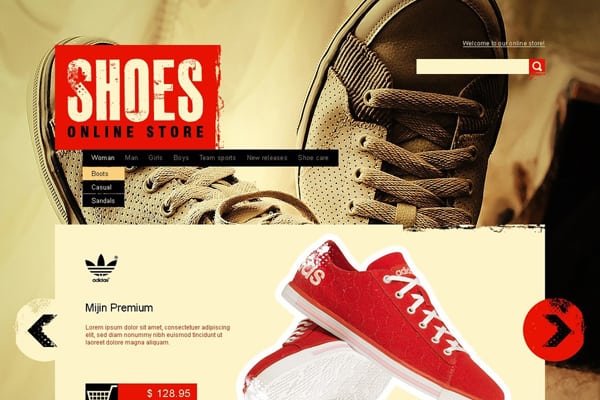How Pandabuy Shoe Store Can Elevate Your Shoe Game This Season
How Pandabuy Shoe Store Can Elevate Your Shoe Game This Season
Blog Article
Leading Trends in Shoes Ecommerce for 2024: What You Required to Know
As we approach 2024, the landscape of shoe eCommerce is poised for significant change, driven by innovative trends that promise to reshape consumer interactions and acquiring actions. Trick growths such as AI customization, sustainability efforts, and the increase of social commerce are set to redefine just how brand names link with their target audiences.
Increase of AI Personalization
The rise of AI customization in the footwear eCommerce market is reshaping the way consumers involve with brand names. As merchants take advantage of advanced formulas and equipment discovering, they can now tailor the purchasing experience to specific choices, enhancing customer satisfaction and commitment. Via data evaluation, AI systems recognize patterns in consumer behavior, making it possible for brands to offer personalized item suggestions, promotions, and web content.
As an example, dynamic item screens adjust in real-time based upon user communication, making sure that customers are offered snappy that resonate with their preferences. This degree of personalization not just enhances the shopping experience yet also drives conversion prices, as consumers are most likely to purchase items that align with their preferences.
Moreover, AI-driven chatbots give individualized assistance, assisting consumers through the purchasing process and resolving questions in a prompt manner. This boosted interaction cultivates a deeper connection between customers and brands. As eCommerce remains to develop, the combination of AI customization will be essential in distinguishing effective footwear sellers from their rivals, permitting them to produce one-of-a-kind, engaging experiences that resonate with the modern-day consumer. Accepting this fad is vital for brand names aiming to grow in the competitive landscape of 2024 and past.

Sustainability in Footwear
Stressing sustainability in footwear has come to be an important emphasis for brands as consumers significantly prioritize green practices. The footwear sector is responding by taking on sustainable products, honest manufacturing methods, and transparent supply chains. Brand names are now using recycled materials, such as plastic and rubber, to produce sturdy and fashionable footwear. This change not just lowers waste but also charms to ecologically aware customers.
Furthermore, companies are executing innovative production techniques that minimize carbon footprints. For instance, 3D printing and automated production procedures minimize product waste and energy consumption. Additionally, many brand names are devoting to honest labor methods, guaranteeing fair incomes and secure working problems for their employees, which resonates highly with today's socially conscious consumers.
To improve sustainability efforts, brand names are likewise concentrating on the concept of circularity. This consists of take-back programs that motivate customers to return old footwear for reconditioning or recycling, thereby prolonging product life and lowering garbage dump waste. As the demand for lasting footwear continues to climb, business that prioritize green methods will likely gain an one-upmanship in the marketplace, promoting brand commitment and attracting brand-new clients devoted to sustainability.
Development of Social Commerce
Capitalizing on the increase of social media sites platforms, brands are progressively incorporating social commerce into their sales methods, identifying its potential to engage customers straight. This fad has transformed exactly how customers uncover and purchase shoes, with platforms like Instagram, TikTok, and Facebook progressing into essential sales channels.
Brand names are leveraging shoppable browse around this web-site blog posts, live streaming events, and influencer partnerships to produce immersive buying experiences that reverberate with their target market. By making use of aesthetically appealing content and authentic storytelling, shoe brands can efficiently display their items and cultivate a feeling of area amongst customers.
In addition, making use of user-generated web content has actually come to be crucial in constructing trust and trustworthiness. Consumers are much more likely to purchase shoes when they see real individuals making use of and recommending the items. This organic form of marketing not just improves brand loyalty yet Discover More additionally drives conversions.
As the landscape proceeds to progress, shoe brand names must remain nimble, adapting to the current social commerce functions while examining consumer habits to maximize their approaches. By accepting this growth, brand names can record the interest of a broader target market, inevitably improving and driving sales customer engagement in the competitive e-commerce market.
Virtual Try-Ons and AR
Changing the on the internet buying experience, online try-ons and increased fact (AR) modern technologies are coming to be crucial tools for footwear brands in 2024. These innovations enable consumers to picture how footwear will fit and look before making an acquisition, dealing with among the most considerable discomfort points in on-line shopping: unpredictability about fit and style.
By leveraging AR, consumers can use their smart devices or devices to see a reasonable overlay of footwear on their feet. This immersive experience not just enhances involvement but likewise dramatically reduces return prices, as customers are more positive in their options. With the growing elegance of AR modern technology, footwear brands can produce individualized experiences, permitting users to customize colors, patterns, and designs in actual time.
Furthermore, online try-ons are being integrated right into social media sites systems, making it easier for consumers to share their footwear options with close friends and seek opinions. As consumers progressively expect tailored and interactive shopping experiences, shoe brands that adopt virtual try-on technology will acquire an one-upmanship. Eventually, the combination of AR in ecommerce is not just a trend; it is becoming an important element of the client trip in the footwear market.
Membership Designs and Services

These subscription services typically include individualized tests that examine specific design choices, dimensions, and requires, making sure that customers obtain alternatives that reverberate with their preferences. Furthermore, lots of brands provide versatile terms, allowing customers to pause or cancel subscriptions easily, further boosting consumer satisfaction.
Moreover, subscription versions can help in reducing the decision-making worry related to buying for shoes, as consumers exist with a selection that look at this website aligns with their choices. This strategy not just promotes brand loyalty but additionally motivates repeat purchases, as customers are more probable to involve with brands that offer convenience and tailored solution.
As ecommerce remains to advance, the assimilation of membership services in footwear retail stands apart as a strategic action. It properly satisfies the needs of modern customers while driving continual earnings growth for brand names in an affordable market.
Verdict
The developing landscape of shoe eCommerce in 2024 highlights the value of AI personalization, sustainability efforts, and social commerce as crucial fads shaping customer experiences. As brands increasingly adopt advanced technologies such as digital try-ons and registration models, the emphasis on enhancing consumer interaction becomes vital. These growths not only show changing consumer choices yet also suggest a more comprehensive shift towards an extra interactive, responsible, and customized purchasing setting within the footwear market.
The increase of AI customization in the shoes eCommerce industry is improving the means customers engage with brands. With information evaluation, AI systems recognize patterns in consumer behavior, allowing brand names to use tailored product recommendations, promotions, and material.
Highlighting sustainability in shoes has actually come to be an essential focus for brands as customers progressively focus on eco-friendly practices. Numerous brands are dedicating to honest labor methods, making sure reasonable earnings and risk-free working problems for their workers, which reverberates highly with today's socially conscious consumers.
As consumers increasingly expect interactive and customized buying experiences, shoe brands that take on digital try-on modern technology will certainly get an affordable edge. pandabuy.
Report this page